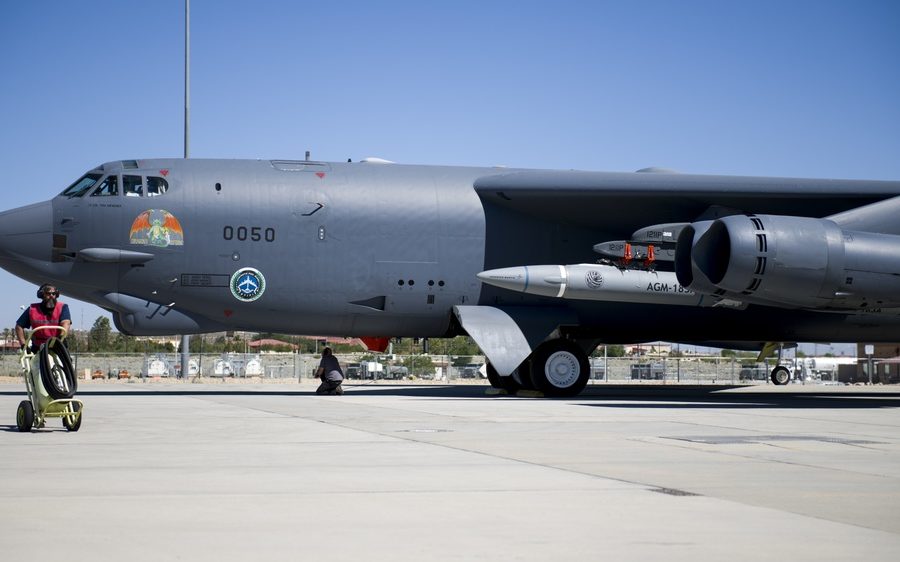The Air Force conducted another test of the AGM-183 Air-launched Rapid Response Weapon (ARRW) hypersonic missile on Oct. 12, but the service is once again withholding most details.
The test was conducted off a B-52H bomber out of Edwards Air Force Base, Calif., and was an “all-up round,” indicating the hypersonic glide vehicle, inside its aeroshell, was mounted to an Army ATACMS missile booster and carried aloft by the bomber.
The test “focused on the ARRW’s end-to-end performance,” according to an Air Force release, although that release did not say whether the missile actually fired and flew to its planned target, or whether it was a success.
“We will not discuss specific test objectives,” a spokesperson said.
The Air Force last flew an ARRW missile on Aug. 21, withholding most information about the test due to secrecy about the program. It did not say whether that test was a success, either.
The ARRW program had a checkered early test phase, with several failures. Earlier this year, Air Force officials said they are closing out the ARRW program after an undisclosed number of test flights and will shift their focus to the Hypersonic Attack Cruise Missile, or HACM.
While ARRW is a boost-glide type hypersonic system so large it must be carried on a bomber, HACM uses an air-breathing engine and is small enough to be carried by a fighter. The Air Force has not released any imagery of HACM, which is being built by Raytheon with Northrop Grumman as the engine supplier. Lockheed Martin is the prime for ARRW.
The ARRW program was structured as a rapid prototyping program, meant to quickly generate vehicles for test and demonstrate a rapid ability to produce the system at scale. The contract called for “leave behind” assets that could be used operationally or for further tests once the initial development was complete. The Air Force has not disclosed how many ARRWs were to have been produced, or how many more it has on hand for further tests.
With the Oct. 12 shot, the Air Force gained “valuable new insights into the capabilities of this new, cutting-edge technology,” and collected “valuable, unique data,” according to a release. The information will “further a range of programs such as ARRW and the Hypersonic Attack Cruise Missile”.
The test also “validated and improved our test and evaluation capabilities for continued development of advanced hypersonic systems.”
The comment may be a reference to the Air Force Test Center at Edwards using RQ-4 Global Hawk aircraft to monitor hypersonic missile tests and gather telemetry. The Test Center is also employing new capabilities for remote use of control rooms and streamlined methods of clearing hypersonic test corridors, commander Maj. Gen. Evan C. Dertien told Air & Space Forces Magazine in a recent interview.
The Air Force has been criticized in recent years for having insufficient hypersonic test capacity, causing a slow pace of program development, but Dertien said the test center is adding capacity through a variety of measures, including new ground test capabilities and wind tunnels.
